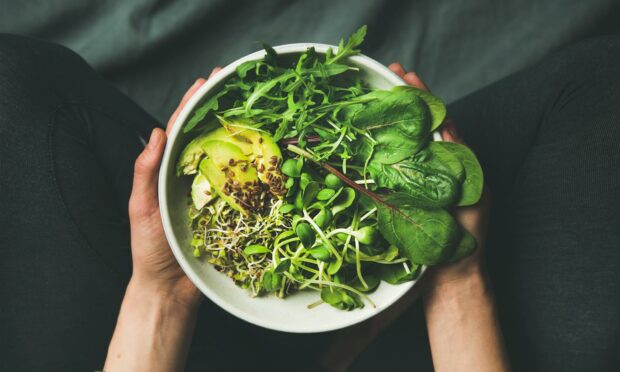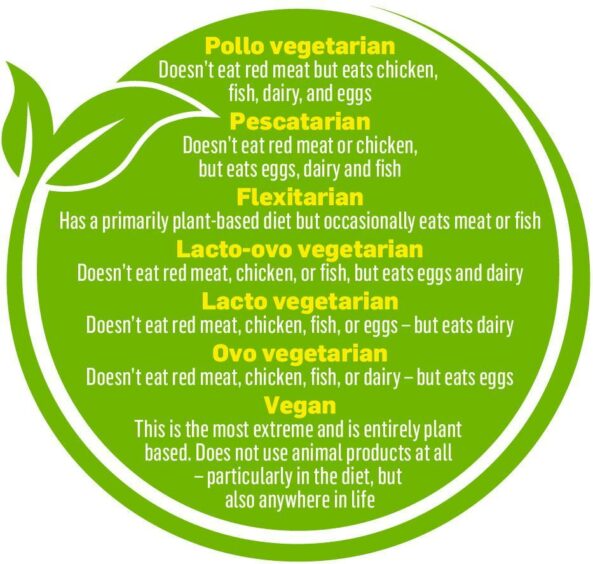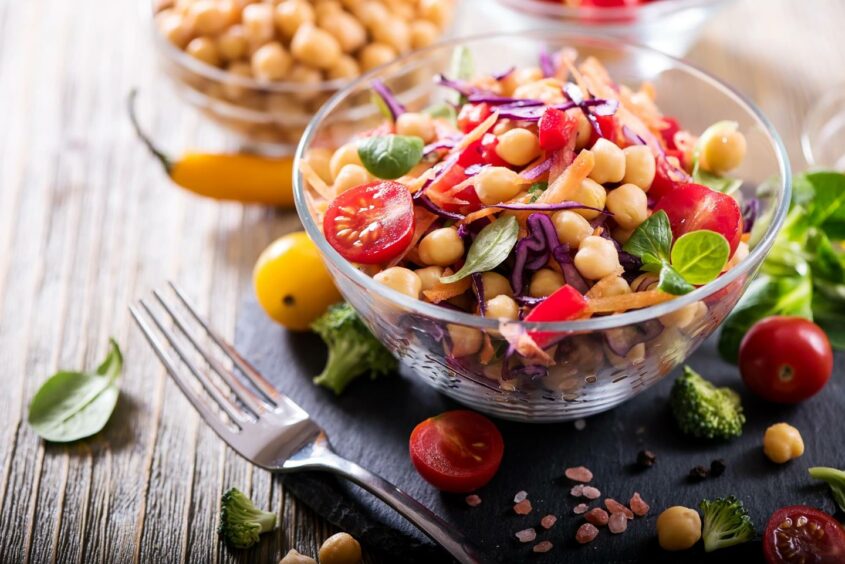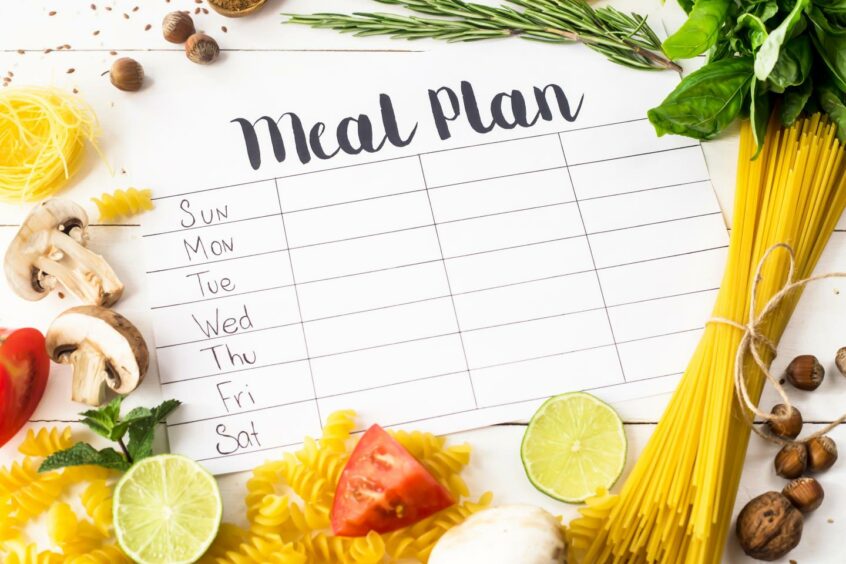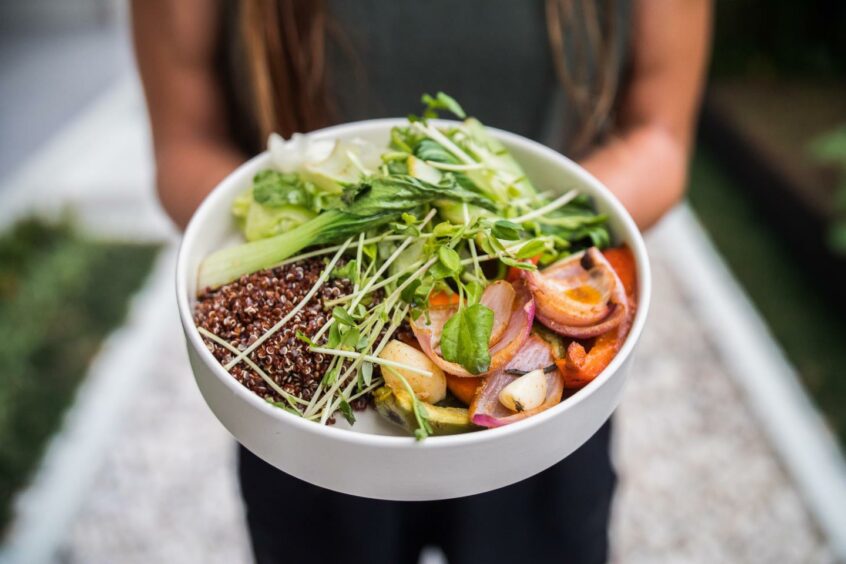Is it OK to just stop eating meat overnight or do we have to do more if we want to move to a plant-based diet? We got some top tips from a nutritionist about what you need to do.
In research conducted by IPSOS Mori, it was estimated 2% of the Scottish population, around 108,000 people, considered themselves to be vegan in 2019.
Since then, plant-based diets have gained a lot more popularity in Scotland and more people are transitioning towards this way of eating.
But, just how easy is it to move to a plant-based diet and is it OK to just stop eating meat overnight?
We spoke to Blairgowrie-based nutritionist Catriona Ronald for her advice on moving to a vegetarian or vegan diet.
“The first thing is that people really need to ask themselves why they want to go to a plant-based diet because there’ll be so many different reasons,” says Catriona.
“For some people it’s just because they want to help the planet and have sustainable diets, other people it might be for ethical reasons or religious reasons.
“Do your research. What do you want to change your diet to? Know what you want to become and know the implications associated with it.”
Wide spectrum of diets
There is a wide spectrum of plant-based diets that Catriona refers to, from pollo vegetarian to fully vegan.
Start from flexi
“Start as a flexitarian by including one or two plant-based meals a week then increase at your own pace to two days plant-based per week and so on,” adds Catriona.
“For every level you go to towards a purely vegan diet you have to plan, think about it and do your research more.
“The more you move towards a plant-based diet, the higher risk you have of missing out on certain nutrients.”
Other tips that Catriona recommends include experimenting with a variety of fruit, vegetables, wholegrains, pulses, beans, nuts and seeds to ensure that those moving towards a plant-based diet get all of the nutrients they need.
“Try to avoid processed foods as well, though that’s the same for everyone,” continues Catriona.
“As veganism becomes more popular, more companies are jumping on the bandwagon with ready-made meals and other processed vegan products, but they aren’t better for you.”
Step1: Make a plan
Becoming vegan or vegetarian requires planning to ensure that our diets contain the right amount of nutrients.
Having a plan, and even writing out a meal plan, will be very beneficial in ensuring you are getting the right nutrients into your diet.
It is important research is carried out before moving to the more extreme end of the plant-based diet spectrum.
Catriona said: “Above all plan the change to your diet. There are some great resources available through vegetarian and vegan societies which have vegetarian and vegan versions of the NHS Eat Well Guide, plus recipes and other advice.
“It’s also worth looking at the resources available through the British Dietetic Association and One Blue Dot.
“Just because you are vegetarian, or vegan does not necessarily mean you are having a healthy balanced diet.
“Somebody could just go ‘I want to be vegan now’ and if they planned it and knew the problems they might face and the nutrients they have to supplement or they can get fortified food for, they could become vegan basically overnight.
“It really is dependent on the person themselves and how much research they do.”
Step 2: Know the nutrients you need
Cutting out entire food groups and moving to any kind of diet means that some nutrients that come from these cut foods won’t be getting into the body and often have to be supplemented.
Catriona says that everyone should eat a wide variety of fruit, vegetables, wholegrains, beans, pulses, nuts and seeds for a healthy diet. And that most meals should be based around the vegetables and wholegrains.
While some nutrients can be sourced from other food groups, others, like vitamin B-12, are commonly taken as supplements.
“Certain nutrients like vitamin B-12 in particular is only available from animal products, so cutting this out requires fortified foods or supplements for B-12.
“It’s a similar case for iodine which is from seafood. If you’re not eating seafood then you’ve got to think about the sources of iodine – you can get fortified milks and things like that.
“Selenium is another one and even vitamin D, although generally people tend to take supplements for vitamin D with government guidance over the winter anyway.
“It really depends on what people are eating. If they are eating the right vegetables and they’re still having a little bit of fish, chicken and meat then you don’t actually need a huge amount of seafood and meat to get the nutrients that you need.”
Vegan diet: What to be aware of
Catriona also highlights some nutrients that may be missed by those who have opted for the more extreme end of the plant-based diet spectrum, by transitioning to a vegan diet.
“Iron is another nutrient that we need and it’s best source is from red meat,” she says.
“Iron-rich plant options include kale, raisins, dried apricots, figs and cooked spinach. Iron absorption can also be boosted by adding vitamin C sources to meals, such as including pepper, broccoli, cabbage, kiwi, strawberries, pineapple or lemon juice.
“For calcium, the best sources are dairy and tinned fish with bones such as salmon and sardines.
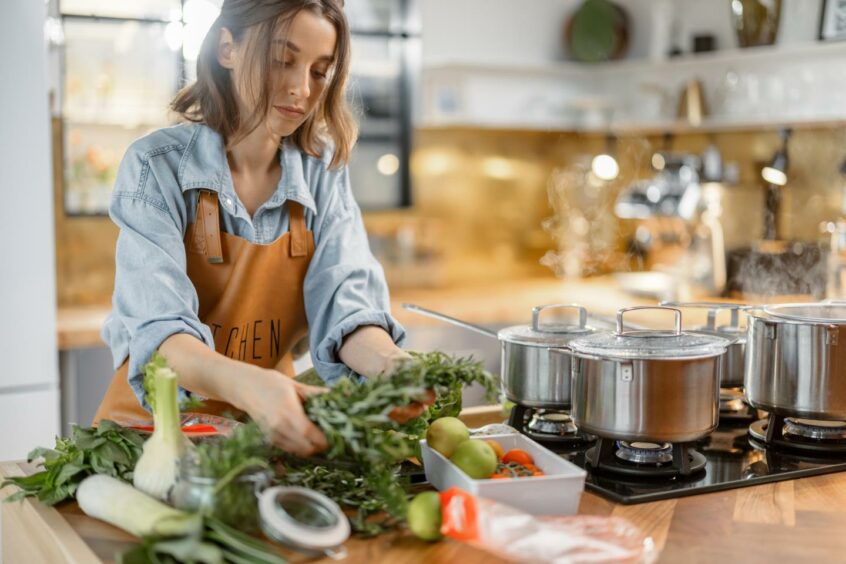
“Plant-based diet sources usually come from fortified plant-based milks, yoghurts, tofu and is also available in foods such as sesame seeds, chia seeds, chickpeas, kale and almonds.
“Vitamin D and magnesium are also important as they are required to work with calcium for bone health, which can sometimes be an issue in the vegan diet.
“Vitamin D advice in Scotland is to take a supplement of at least 10 micrograms per day between September to April.”
